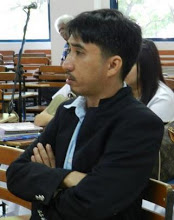Last week, I followed a conversation on an OpenSuse Education newsletter to which I subscribe. I didn’t have time to join in, but it did get me thinking about open source in education more broadly. Regular readers will know that my school district has made serious strides in the last couple of years, particularly as it relates to technology. However, those same regular readers will also know that the community is hurting like many other aging mill towns and that I frequently at least explore open source solutions as money savers.
For now, most open source use is among students. All of the elementary schools use Open Office; we don’t have any Office licenses in place with the exception of a couple secretarial power users who are able to exploit some of the advanced features in Office 2007. Students throughout the district use Open Office at home, saving themselves the trouble of using Works if it came preinstalled on their computers or to avoid buying Office. I hand out CDs and USB keys to students with dialup access loaded with OO.org 3.
An increasing number of students and teachers have turned to Linux as they try to eek out a bit of extra life on their computers or decide that they don’t like whatever version of Vista came preinstalled on computers they recently purchased. I’m happy, along with a couple of my techs, to help people get up an running with Linux. However, we haven’t yet rolled out Linux formally in our schools. The only time we had a full Linux lab was when we had absolutely no technology funding in my second year teaching and I let my students build a lab from old donated computers.
Which leads me to the point of this post? If you have money in your district, is there any reason to use Linux? The original conversation I mentioned earlier was started by an IT staffer at an exclusive, well-funded private school. They were a Windows shop and saw no incentive to change. Licensing costs were a non-issue. Even we still largely use Windows and OS X, despite my fondness for Linux. We’ve been granted the funding to do so in the last couple of years and my primary goal has been instructional integration of computing, rather than worrying about training for a Linux rollout.
We’re hunkering down now budget-wise for a tough couple of years. While we have solid technology in place, new acquisitions will be very carefully scrutinized for cost and benefit; there are very few pennies to spare. Saving $50 per computer on OS licensing just might be the difference between funding a project and needing to wait for 1-2 years.
So again, is Linux only useful in a recession or in South American countries trying to get as many computers into the hands of rural schoolchildren as they can?
Cost will certainly give people a reason to switch, but I don’t think a crappy economy or poverty in a developing country is the only reason to use Linux and open source software. I won’t even get into the argument of exposing kids to a variety of computing environments. I think the biggest reason to use Linux (aside from potential cost savings if you can develop some in-house *nix expertise) is simply the giant body of software that is freely available.
The OpenSUSE Education project is a great example. Desktop software included with this project ranges from computer science applications for kids to the R statistical programming interface. Server software ranges from OpenSIS to Joomla.
Whether your school has money or not, there is incredible value in the open source community. Perhaps most important, though, is that word “community.” We can talk all we want about global economies, but allowing students and staff to be part of and participate in a community that drives the way we use technology is an incredible opportunity. Keep in mind that there is plenty of open source value for Windows users; we don’t all have to switch to Linux to reap the benefits of FOSS.



